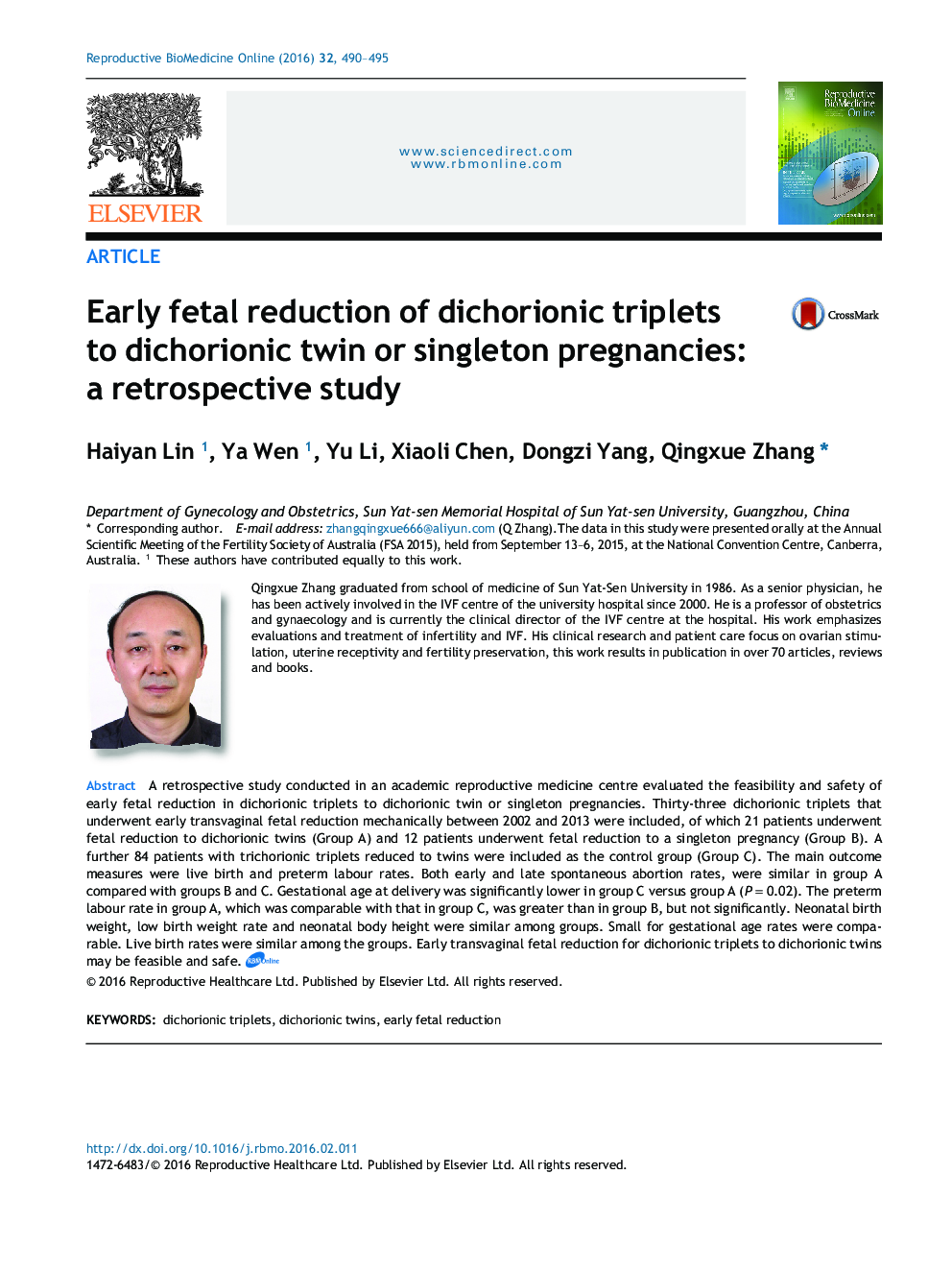| Article ID | Journal | Published Year | Pages | File Type |
|---|---|---|---|---|
| 6188658 | Reproductive BioMedicine Online | 2016 | 6 Pages |
Abstract
A retrospective study conducted in an academic reproductive medicine centre evaluated the feasibility and safety of early fetal reduction in dichorionic triplets to dichorionic twin or singleton pregnancies. Thirty-three dichorionic triplets that underwent early transvaginal fetal reduction mechanically between 2002 and 2013 were included, of which 21 patients underwent fetal reduction to dichorionic twins (Group A) and 12 patients underwent fetal reduction to a singleton pregnancy (Group B). A further 84 patients with trichorionic triplets reduced to twins were included as the control group (Group C). The main outcome measures were live birth and preterm labour rates. Both early and late spontaneous abortion rates, were similar in group A compared with groups B and C. Gestational age at delivery was significantly lower in group C versus group A (P = 0.02). The preterm labour rate in group A, which was comparable with that in group C, was greater than in group B, but not significantly. Neonatal birth weight, low birth weight rate and neonatal body height were similar among groups. Small for gestational age rates were comparable. Live birth rates were similar among the groups. Early transvaginal fetal reduction for dichorionic triplets to dichorionic twins may be feasible and safe.
Keywords
Related Topics
Health Sciences
Medicine and Dentistry
Obstetrics, Gynecology and Women's Health
Authors
Haiyan Lin, Ya Wen, Yu Li, Xiaoli Chen, Dongzi Yang, Qingxue Zhang,
